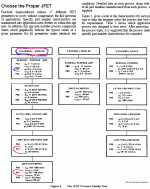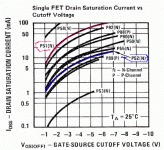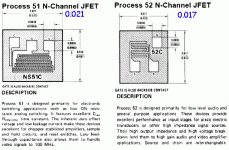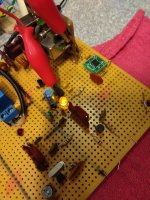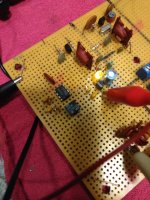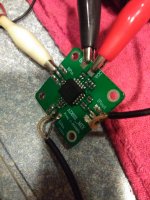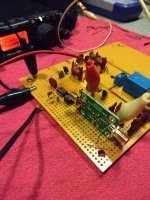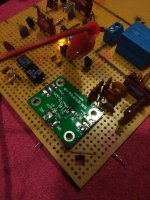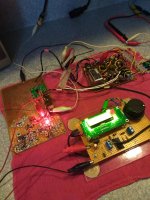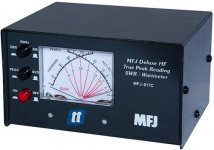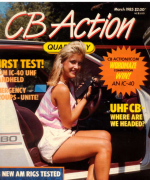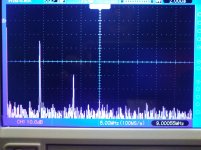I keep seeing a spec - SSB NF - on data sheets for the newish mixer chips, and it is unfamiliar to me.
In this spec,"SSB" and "USB" and "LSB", are not the SSB, USB, and LSB customarily understood by hams, but it is instead referring to the mixer's exposure to unwanted RF?
Or in other words, an SSB mixer is a mixer in a frequency conversion scheme, or other design, where the mixer is protected from having to deal with the image frequency, but a DSB mixer would be the opposite - either the frequency conversion scheme, or design choices, expose the mixer to both the desired frequency and the image frequency? And a DSB mixer would have a 3 dB greater NF since there is twice the noise coming into the mixer?
So, in a practical sense, particularly with an up converter, most mixer designs are "SSB" and SSB NF is the practical number to be concerned with? Assuming one is even concerned with such things.
Win W5JAG
In this spec,"SSB" and "USB" and "LSB", are not the SSB, USB, and LSB customarily understood by hams, but it is instead referring to the mixer's exposure to unwanted RF?
Or in other words, an SSB mixer is a mixer in a frequency conversion scheme, or other design, where the mixer is protected from having to deal with the image frequency, but a DSB mixer would be the opposite - either the frequency conversion scheme, or design choices, expose the mixer to both the desired frequency and the image frequency? And a DSB mixer would have a 3 dB greater NF since there is twice the noise coming into the mixer?
So, in a practical sense, particularly with an up converter, most mixer designs are "SSB" and SSB NF is the practical number to be concerned with? Assuming one is even concerned with such things.
Win W5JAG
Did I already give a JFET rant?...
There are only a dozen(+/-) JFET masks/processes. There are 7 billion sort-out JFET part numbers.
Some users need super-low gate leakage. Some users need high-selection breakdown voltage. Some needed a super-low price and got a low-spec part number the maker could fill with "rejects" from high-price part bins.
For RF, you mostly want enough Vgs(off) to cover your signal, and enough Idss to swing the output (possibly even when de-biased by AGC).
For UHF RF you want the most Gm for the least C. Frequently this leads to super high I thus high Idss. There may be other issues with source lead inductance yadayada. If you are exploring the old spark-gap band, this hardly matters.
Some users need fair-matched pairs; not 1% but maybe 10% within a box/reel, so push-pull things work sweet. This might include you.
So yeah: mostly you pick an in-stock part with tolerable Vgs and Idss and low price, buy 100, and hand-bias, setting aside ones that don't reach your goal.
Here is an old process-selector page. I've marked some for some reason, probably audio. A few JFET datasheets still cite a Process Number. When in doubt, P50 will work well enough to clarify why you might prefer something else.
Attachments
Last edited:
most mixer designs are "SSB" and SSB NF is the practical number to be concerned with?
Yes, usually.
In most superhet designs at reasonable DIY frequencies there are image filters in front of the mixer. In some designs, however there may be a gain stage in front of the mixer with no intervening filter in between. In this case any broadband noise created in this gain stage will be seen by the mixer twice, once at the desired frequency, and once again at the image frequency.
Mixers operate best when there is a broadband match or terminating impedance on each port. Sticking a saw or crystal filter directly on a mixer port can screw up its performance, so sometimes a tradeoff is required.
The IF port is particularly prone to mismatch so sometimes a diplexer is used. A diplexer is a 3 port device that passes the desired IF frequency to one output port, and all other frequencies to the other port which is terminated into 50 oums, or whatever the mixer wants to see.
If the RF pore demands 50 ohms for all frequencies, then it is possible t use a 50 ohm gain block on the RF port chosen for a very low noise figure. Adding a 1 db NF gain block to a 7 db NF mixer will not usually hurt you much.
Assuming one is even concerned with such things.
One is most concerned with such things in an upconversion, or direct conversion transmitter that uses a broadband Rf power amp. That was my last project before leaving Motorola. One TX to cover 136 to 870 MHz with public safety type specs, all spurious or otherwise unwanted output must be 80 db below the desired carrier output, tapering to -140 db 10 MHz away from the carrier. Broadband noise in the PLL was the biggest hurdle.
We discovered during testing before shipping the first Nextel phones that two of them could not be used in the same car. Placing a call on the second phone would blow the call on the first phone. Broadband noise in the 820 MHz transmitter would be strong enough in the receive frequencies around 865 MHz to whack the receiver in the first phone. Two SAW filters in the TX chain was the cure.
I got interested in such things because the "SSB NF" of that HP chip is 17 db at 2 GHz. I figured it would be a lot less at HF, but maybe it is not. A single chip seemed to work reasonably well, but a pair in double conversion was pretty deaf.
I rigged up that MOSFET preamp with a pair of tuned circuits, put in a 40673 biased for maximum gain ( I measured it at 26 db at 14.2 MHz when I was testing it ), pulled the MMIC and put the preamp board in front of the pair of HP chips, and while it didn't oscillate, the setup was just .... still deaf.
At various times while tinkering I had run the HP chips at or over one or more of the max ratings so perhaps I have damaged them. I pulled them off the board for now.
I put an SA612 on the board, and set the DDS for hi side injection with a 9 MHz IF, and that is pictured below. I've only played with it a few hours, never used it before, but I see why this chip became so popular, so fast, in ham world. As quiet or more so than a 40673, and a LOT more conversion gain. Still in the Mouser catalog for two bucks. Might not need anything ahead of it at HF with an antenna as good as, or better than, a dipole.
It is in the simplest configuration, untuned input and output, and using the onboard oscillator transistor as a buffer. The data sheet says 4.5 db NF at 45 MHz, and I believe it. The data sheet doesn't say much about LO injection other than it needs to be 200 mv or more. I tried a few hundred millivolts and didn't think that was enough. 4.5 v p-p is definitely too much. I'm using 1.5 v p-p right now and it seems OK. I'm running the chip at about 7.3 volts.
I have some AD831 Mixer boards on the way here via eBay, but I am wondering if these modern GHz level chips are unsuited for HF.
Win W5JAG
I rigged up that MOSFET preamp with a pair of tuned circuits, put in a 40673 biased for maximum gain ( I measured it at 26 db at 14.2 MHz when I was testing it ), pulled the MMIC and put the preamp board in front of the pair of HP chips, and while it didn't oscillate, the setup was just .... still deaf.
At various times while tinkering I had run the HP chips at or over one or more of the max ratings so perhaps I have damaged them. I pulled them off the board for now.
I put an SA612 on the board, and set the DDS for hi side injection with a 9 MHz IF, and that is pictured below. I've only played with it a few hours, never used it before, but I see why this chip became so popular, so fast, in ham world. As quiet or more so than a 40673, and a LOT more conversion gain. Still in the Mouser catalog for two bucks. Might not need anything ahead of it at HF with an antenna as good as, or better than, a dipole.
It is in the simplest configuration, untuned input and output, and using the onboard oscillator transistor as a buffer. The data sheet says 4.5 db NF at 45 MHz, and I believe it. The data sheet doesn't say much about LO injection other than it needs to be 200 mv or more. I tried a few hundred millivolts and didn't think that was enough. 4.5 v p-p is definitely too much. I'm using 1.5 v p-p right now and it seems OK. I'm running the chip at about 7.3 volts.
I have some AD831 Mixer boards on the way here via eBay, but I am wondering if these modern GHz level chips are unsuited for HF.
Win W5JAG
Attachments
Well, I just went out to the shack and flipped it on, and heard a DL working a contest, and a few other continental stations ... with just the untuned wire antenna clipped to the high impedance side of the input tuned circuit ....
Haven't heard any of those guys since spring, with the SteppIR hooked up, which is working again, but is not hooked up to anything. So I guess this setup is sensitive enough .....
Win W5JAG
Haven't heard any of those guys since spring, with the SteppIR hooked up, which is working again, but is not hooked up to anything. So I guess this setup is sensitive enough .....
Win W5JAG
The broadband "preamp" should arrive later this week, so I pulled the narrowband amp to allow installation of the broadband part, and, at the same time, reoriented the chip on the board for a better layout, added one of the broadband CoilCraft transformers from an earlier post to allow for a balanced input to the chip, and the outcome was just terrible.
The result was severe cross modulation, worse than when I was overdriving the diode mixer, which was really, really, bad. This didn't make sense, since everything I did should have been an improvement. I didn't tinker with it Monday evening, but I did notice it didn't seem to work as well as it had the previous day. It didn't take long to work through the possibilities and isolate it to a bad SA602 chip.
So, I replaced it, and while the replacement was a lot better, it still didn't seem right to me. Counterfeit, junk, or bad chips? They did come dirt cheap surplus from China .....
Easy enough to test, as I had some real plastic DIP chips from the time the part was first introduced. A couple even had the old NE Signetics prefix. I pulled the SMD part, and installed a DIP Signetics marked SA602N with an 8625 date code. This predates the "improved" premium part, so would be equivalent to the modern NXP SA612. The old premium part would be 602AN.
This worked as expected. I threw what was left of the the strip of SMD SA602 in the trash.
So now, I wonder, are the HP chips I have also junk? I was pretty enthusiastic about them at first, but in the end they had also degraded to just noise, so bad that 26 db of quiet gain ahead of them didn't make any appreciable improvement. Like the SMD SA602's, I had run them hot. Maybe not a good practice, but if the manufacturer publishes a spec, I expect to be able to use the part at that spec.
I did not throw the strip of HP parts in the trash, at least not until I can find a reputable source for them, which may be hard, since they are obsolete. Maybe the problem is me, and they are okay at more conservative operating points, so for now I am hanging on to them.
In the meantime, here is the Signetics SA602N behind the broadband CoilCraft, awaiting the MMIC preamp. It is also running hot, so we will see how it holds up. The prefab boards take up a lot of room, so I am not sure I can fit double conversion into the remaining space. Now i wonder - will the preamp come with a weak / junk MMIC chip? At least it should be easy enough to replace, and the board is worth what it cost.
Win W5JAG
The result was severe cross modulation, worse than when I was overdriving the diode mixer, which was really, really, bad. This didn't make sense, since everything I did should have been an improvement. I didn't tinker with it Monday evening, but I did notice it didn't seem to work as well as it had the previous day. It didn't take long to work through the possibilities and isolate it to a bad SA602 chip.
So, I replaced it, and while the replacement was a lot better, it still didn't seem right to me. Counterfeit, junk, or bad chips? They did come dirt cheap surplus from China .....
Easy enough to test, as I had some real plastic DIP chips from the time the part was first introduced. A couple even had the old NE Signetics prefix. I pulled the SMD part, and installed a DIP Signetics marked SA602N with an 8625 date code. This predates the "improved" premium part, so would be equivalent to the modern NXP SA612. The old premium part would be 602AN.
This worked as expected. I threw what was left of the the strip of SMD SA602 in the trash.
So now, I wonder, are the HP chips I have also junk? I was pretty enthusiastic about them at first, but in the end they had also degraded to just noise, so bad that 26 db of quiet gain ahead of them didn't make any appreciable improvement. Like the SMD SA602's, I had run them hot. Maybe not a good practice, but if the manufacturer publishes a spec, I expect to be able to use the part at that spec.
I did not throw the strip of HP parts in the trash, at least not until I can find a reputable source for them, which may be hard, since they are obsolete. Maybe the problem is me, and they are okay at more conservative operating points, so for now I am hanging on to them.
In the meantime, here is the Signetics SA602N behind the broadband CoilCraft, awaiting the MMIC preamp. It is also running hot, so we will see how it holds up. The prefab boards take up a lot of room, so I am not sure I can fit double conversion into the remaining space. Now i wonder - will the preamp come with a weak / junk MMIC chip? At least it should be easy enough to replace, and the board is worth what it cost.
Win W5JAG
Attachments
Unfortunately the trend is toward smaller and smaller IC chips. This unfortunately drives the PCB layout toward smaller and smaller passives just to be able to place everything near the chip. Most of the newer IC's never existed in DIP, and the SOIC's are vanishing. Now its TSSOP, or QFN (Quad Flat No lead) for the small stuff. Hand soldering a QFN can be iffy if the pads don't extend up the side of the chip, often the case. Two 0805's or even 0603's wont fit next to each other along side a QFN.
Yeah, I don't know what size these parts are, 0402 I guess, but I dislodged a coupling cap removing the SMA fittings, and it was was not a lot of fun replacing it.
This is an AD831 dbm mixer board, widely available on ebay for $10 usd ish. Doesn't need much LO drive, seems to have quite a bit of conversion gain. Just hooked it up a few minutes ago. Not much else to say right now.
Listening to the oldies show on WTWW on 5085 kHz. They have a pretty good sounding transmitter, and just being the next state over, pound in here at night.
edit: interesting to hear ads for ham radio stuff ....
Win W5JAG
Attachments
Last edited:
The broadband preamp, in a hasty test installation.
The SMA fittings are soldered on both sides of the board, and I decided the risks of trying to remove them with my tools outweighed the benefits. I will have to move the mixer to be able to lay the board flat. These prefab boards are not that big, but they are bigger than my DIY layouts, and bigger than I budgeted for.
It works, no real opinion on it one way or the other right now. It's only getting 8 volts, it probably needs more than that. Seems like a decent quality board for $6 USD.
Win W5JAG
The SMA fittings are soldered on both sides of the board, and I decided the risks of trying to remove them with my tools outweighed the benefits. I will have to move the mixer to be able to lay the board flat. These prefab boards are not that big, but they are bigger than my DIY layouts, and bigger than I budgeted for.
It works, no real opinion on it one way or the other right now. It's only getting 8 volts, it probably needs more than that. Seems like a decent quality board for $6 USD.
Win W5JAG
Attachments
It took quite a bit of hot air, but the SMA fittings came off without any damage to the board.
I normally bypass the MW filter, but with this broadband amp, reception is significantly improved with it in place. It might be unneeded with a tuned antenna.
It seems stable over a wide range of voltage. The listing suggested the gain could be varied with applied voltage; I'm not really seeing that with the current test setup. I may try to measure it at some point.
Seems worth the 6 bucks or so it cost - can't buy the parts for that. Likewise that AD831 mixer board - the AD831 chip is almost fifteen bucks at Mouser. Assuming the chip on the board is genuine.
Win W5JAG
I normally bypass the MW filter, but with this broadband amp, reception is significantly improved with it in place. It might be unneeded with a tuned antenna.
It seems stable over a wide range of voltage. The listing suggested the gain could be varied with applied voltage; I'm not really seeing that with the current test setup. I may try to measure it at some point.
Seems worth the 6 bucks or so it cost - can't buy the parts for that. Likewise that AD831 mixer board - the AD831 chip is almost fifteen bucks at Mouser. Assuming the chip on the board is genuine.
Win W5JAG
Attachments
This is the ebay Analog Devices AD831 prefab mixer board, behind the narrow band MOSFET RF amp.
There are some things I really like about this - low LO drive, preassembled, cheap price. Some things I don't like are the size of the module, and it has a bone crushing current requirement - 125 ma. It also has a narrow operating voltage range, 9-11 VDC. Right now I am running it at 8 VDC, and it seems to work fine, even though it is out of spec. I ran it at 10 VDC initially, and didn't like how warm it ran.
This setup works pretty well, I expect it would be satisfactory in actual usage.
I don't have enough room on this board to make double conversion with these prefab boards, so I need to get another protoboard, or just stick with single conversion, if I go with the prefab modules. I've been leaning toward single conversion for a while since this will be a single band radio, at least in the first version.
Win W5JAG
There are some things I really like about this - low LO drive, preassembled, cheap price. Some things I don't like are the size of the module, and it has a bone crushing current requirement - 125 ma. It also has a narrow operating voltage range, 9-11 VDC. Right now I am running it at 8 VDC, and it seems to work fine, even though it is out of spec. I ran it at 10 VDC initially, and didn't like how warm it ran.
This setup works pretty well, I expect it would be satisfactory in actual usage.
I don't have enough room on this board to make double conversion with these prefab boards, so I need to get another protoboard, or just stick with single conversion, if I go with the prefab modules. I've been leaning toward single conversion for a while since this will be a single band radio, at least in the first version.
Win W5JAG
Attachments
.... This setup works pretty well, I expect it would be satisfactory in actual usage. .....
Been using it for a week or so; my impression is still the same - the cheap AD831 mixer board with the narrowband 40673 RF amp and SG-9 IF board makes a very satisfactory single conversion radio. The sensitivity is good, the AD831 doesn't seem to care that it is not matched on either port, it doesn't show any sign of overload on big signals; no indication of local broadcast stations breaking through, AGC action is good, audio quality is good.
Actually, it is kind of refreshing to listen to a radio that doesn't go through multiple conversions, filters, DSP, etc. like has been the norm for at least the last couple of decades. They do sound different.
Other than a better tunable LO, I'm not sure there is much, or any, practical improvement to be had here, given that the end product is to be a single band mobile rig.
I was getting some AF ringing with those twisted wires for the low level audio leads, so I replaced all of those with shielded cables. The NEC AF chip on the SG-9 has 50 dB gain according to the data sheet for the ECG equivalent, so not too surprising it would ring. The shielded cable cleaned that up.
Win W5JAG
I am not an RF guy, but a friend brought me a cross-needle SWR meter because it looked like something I might like. Not quite the same as this model (attached). A real elegant way to do computation of a ratio.
Attachments
Found it: Workman HP202s -- 26-30MHz.
Workman HP202S SWR / Watt Meter Review
Workman HP202S SWR / Watt Meter Review
Hi PRR,
Those have been out for quite some time now. Yes, they are kinda cool.
So, are you going to get your HAM license or chicken bander license?
A lifetime ago I had a CB home station and a mobile as well. That meter would have been the thing to have back then. I was 15 ~ 17 at the time. I even have the antenna lead still, I couldn't bear to throw it out. RG-6 might have been. I should take a look at it. I terminated it with PL-259 connectors (soldered).
-Chris
Those have been out for quite some time now. Yes, they are kinda cool.
So, are you going to get your HAM license or chicken bander license?
A lifetime ago I had a CB home station and a mobile as well. That meter would have been the thing to have back then. I was 15 ~ 17 at the time. I even have the antenna lead still, I couldn't bear to throw it out. RG-6 might have been. I should take a look at it. I terminated it with PL-259 connectors (soldered).
-Chris
Those have been out for quite some time now.
Decades for sure.
The brand on mine may have been defunct in 2004, and they sold it for years before that. There's several/many other minorly-different products, like my attach. I had never seen one up close though. Last-chance, because the few who still need to know an SWR can buy a digital cheaper.
Ah, but mine is tagged $3.
What occurs to me: good audio needle-meters are becoming scarce. This is two fairly sensitive meters in one: Stereo! Hack the RF stuff off. It should be possible to read >1W speaker levels with simple diode circuit. Line level wants a 19-cent buffer-rectifier. The meters are linear so only 20dB range, but there's a 3-way switch so 30 or 50dB can be covered.
Lastly: if the several internal diodes are Germanium there are people who will pay the $3 price just for the few Ge diodes. Shotkees are not-the-same in fuzz boxes.
I have an amateur extra license but still buy pretty much any CB gear at garage sales.
Over the years have picked up a Galaxy SSB and Motorola MoCat etc.
Found a couple of linear amps too. One is 250 watts. Of course they are grandfathered for selling and are illegal to use. I've picked up a couple of zenith transocean SWL receivers too.
Over the years have picked up a Galaxy SSB and Motorola MoCat etc.
Found a couple of linear amps too. One is 250 watts. Of course they are grandfathered for selling and are illegal to use. I've picked up a couple of zenith transocean SWL receivers too.
Attachments
During extended "burn in" testing of the TX, a switching transistor failed, and had to be replaced.
The pic is RF TX output. The second harmonic seems high. After the filter, the TX signal passes through a single tuned MOSFET RF amp, and then an untuned JFET buffer to the outside world. Drive is a 1 KHz sine wave from my audio generator. The SG-9 is not being overdriven; in fact drive level seems to make no difference. The second harmonic stays at - 26 dB at any drive level that I can see within the 8 bits of the FFT.
I've decided the RF performance of the MOSFET preamp / AD831 / SG-9 is completely adequate for the intended application. The AD831 looks to have a somewhat high SSB NF, but this does not seem to be a real world issue in a single conversion configuration, when preceded by the reasonably quiet RF amp.
I've thought some about the TX part of the transverter, but haven't melted any solder yet.
edit: Is NF anything I should be concerned with in a TX mixer?
Win W5JAG
The pic is RF TX output. The second harmonic seems high. After the filter, the TX signal passes through a single tuned MOSFET RF amp, and then an untuned JFET buffer to the outside world. Drive is a 1 KHz sine wave from my audio generator. The SG-9 is not being overdriven; in fact drive level seems to make no difference. The second harmonic stays at - 26 dB at any drive level that I can see within the 8 bits of the FFT.
I've decided the RF performance of the MOSFET preamp / AD831 / SG-9 is completely adequate for the intended application. The AD831 looks to have a somewhat high SSB NF, but this does not seem to be a real world issue in a single conversion configuration, when preceded by the reasonably quiet RF amp.
I've thought some about the TX part of the transverter, but haven't melted any solder yet.
edit: Is NF anything I should be concerned with in a TX mixer?
Win W5JAG
Attachments
Last edited:
I had a generic NPN transistor tacked on the back of the board as a replacement for the bad switch; tonight I found an old pull out part that had the correct ECB pinout, and made a proper repair.
I'm not all that impressed with the frequency response of the transmitter; playing with it some, it seems flat from about 600 Hz to 1700 Hz, and -3 db from about 320 Hz to 2800 Hz. I'm not sure if this is the actual filter response, or the audio channel response to give it a bit more apparent talk power. On receive, it does not sound rolled off on either end of the passband. I haven't tried to measure the tx audio channel; the board is packed tight - I would probably have to solder in a test point on the back of the board to be able to clip up a scope probe.
Win W5JAG
I'm not all that impressed with the frequency response of the transmitter; playing with it some, it seems flat from about 600 Hz to 1700 Hz, and -3 db from about 320 Hz to 2800 Hz. I'm not sure if this is the actual filter response, or the audio channel response to give it a bit more apparent talk power. On receive, it does not sound rolled off on either end of the passband. I haven't tried to measure the tx audio channel; the board is packed tight - I would probably have to solder in a test point on the back of the board to be able to clip up a scope probe.
Win W5JAG
- Home
- Member Areas
- The Lounge
- No RF gear here?
